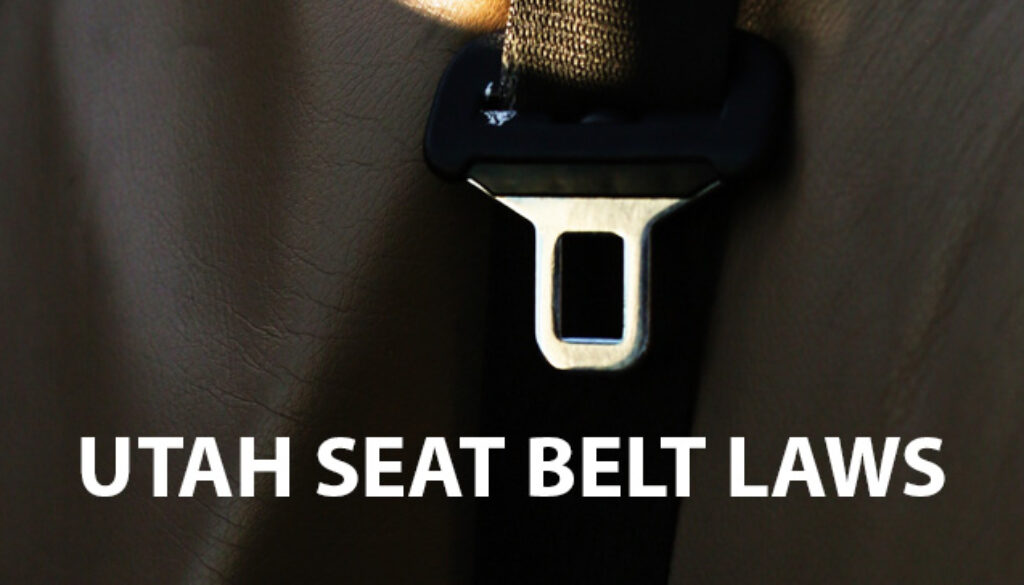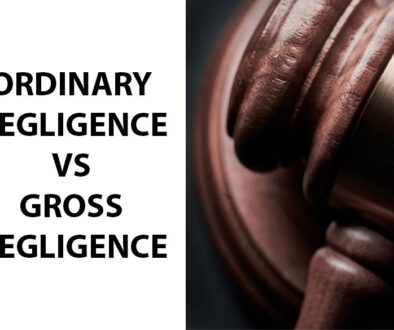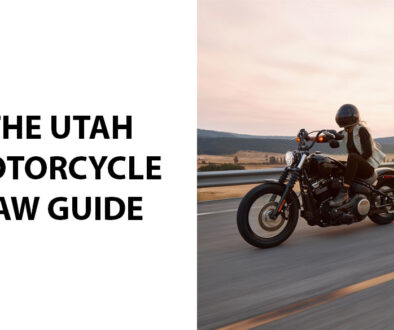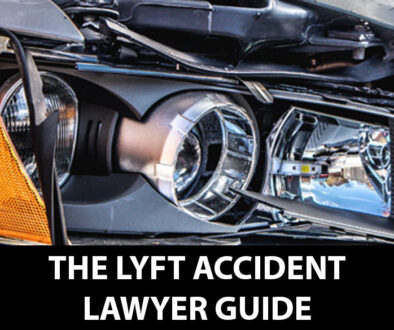The Guide to Utah Seat Belt Laws: Are You Required to Wear it?
Utah has strict seat belt laws in place, requiring all drivers and passengers to wear seat belts while operating or riding in a motor vehicle. These laws were put in place to reduce the number of injuries and fatalities resulting from motor vehicle accidents. Despite this, there are still some who question whether or not they are required to wear a seat belt while driving in Utah. In this blog post, we will explore the Utah seat belt laws and clarify any confusion surrounding them. We will also discuss the potential consequences of not wearing a seat belt in Utah and why it is crucial to buckle up every time you get behind the wheel.
We’re experts in Utah seat belt laws, car accident settlements, and Utah personal injury law. Click the button below to request a free call.
Why You Should Legally Wear a Seat Belt in Utah
Wearing a seat belt is crucial for your safety while driving in Utah, or anywhere else for that matter. Seat belts are designed to keep drivers and passengers restrained in the event of an accident, and they are one of the most effective ways to prevent serious injury or death.
In Utah, seat belt use is mandatory for all drivers and passengers, and failure to wear a seat belt can result in a fine. In addition to the legal requirement, there are many reasons why wearing a seat belt is important for your safety.
- For one, seat belts can help prevent ejection from the vehicle in the event of a crash. Being ejected from a vehicle greatly increases the risk of serious injury or death, and wearing a seat belt can keep you safely inside the vehicle.
- Seat belts also help to distribute the force of impact in a crash, reducing the risk of injury to your head, neck, and other vital areas of the body. They can also help prevent whiplash, which is a common injury in rear-end collisions.
- Additionally, wearing a seat belt can help protect others in the vehicle. Unrestrained passengers can become projectiles in a crash, endangering themselves and others in the car. By wearing a seat belt, you can help prevent this from happening and reduce the risk of injury to everyone in the vehicle.
Legal and Non-Legal Consequences of Not Wearing a Seat Belt
The legal consequences of not wearing a seatbelt in Utah can be quite severe. Utah law enforcement officers are authorized to pull over and ticket drivers or passengers who are not wearing a seat belt. A driver can also be pulled over for having passengers in their vehicle who are not properly restrained. The fine for not wearing a seat belt in Utah can vary, but the minimum fine for a first offense is $45.00, and it can increase for subsequent offenses.
In addition to legal consequences, not wearing a seat belt can have severe non-legal consequences. The most significant non-legal consequence is an increased risk of injury or death in the event of a motor vehicle accident. The Utah Department of Public Safety reported that in 2020, nearly 50% of people killed in motor vehicle accidents were not wearing seat belts.
Wearing a seat belt significantly reduces the risk of serious injury or death in a car accident. Another non-legal consequence of not wearing a seat belt is the impact it can have on insurance claims. If a person is injured in a car accident, and it is found that they were not wearing a seat belt, it can significantly impact their ability to receive compensation for their injuries. Insurance companies can argue that the injuries sustained were the result of the person not wearing a seatbelt and therefore not the fault of the other driver or their insurance company. This can result in a reduced settlement or no settlement at all.
Can You Be Pulled Over For Not Wearing a Seat Belt in Utah?
Yes, you can be pulled over for not wearing a seat belt in Utah. Utah has strict seat belt laws in place that require all drivers and passengers to wear seat belts while operating or riding in a motor vehicle. Law enforcement officers are authorized to pull over and ticket drivers or passengers who are not wearing a seatbelt. A driver can also be pulled over for having passengers in their vehicle who are not properly restrained.
Utah’s seat belt laws apply to all drivers and passengers, regardless of age or seating position in the vehicle. It is also important to note that the laws apply to both front and back seats. This means that everyone in the vehicle must be properly restrained at all times, regardless of where they are sitting.
Utah Car Seat Laws and Penalties
Utah car seat laws are designed to protect children and ensure their safety. The laws set specific guidelines for the use of car seats and booster seats based on a child’s age, weight, and height. Parents and caregivers who fail to comply with these laws may face penalties and fines.
Here is a list of Utah car seat laws and penalties:
- Infants and toddlers up to age two must be secured in a rear-facing car seat. Failure to comply with this law can result in a fine of up to $45.00.
- Children ages two to four must be secured in a forward-facing car seat with a harness. Failure to comply with this law can result in a fine of up to $45.00.
- Children ages five to seven must be secured in a booster seat. Failure to comply with this law can result in a fine of up to $45.00.
- Children ages eight to 15 must wear a seat belt while riding in a motor vehicle. Failure to comply with this law can result in a fine of up to $45.00. 5. Children under 13 years of age must ride in the back seat of a vehicle if it is equipped with a back seat. Failure to comply with this law can result in a fine of up to $45.00.
It is important to note that these laws apply to all motor vehicles, including cars, trucks, and SUVs. Additionally, the laws require parents and caregivers to use car seats and booster seats that meet specific safety standards. Penalties for violating Utah’s car seat laws can range from fines to points on a person’s driver’s license. In addition to the financial and legal consequences, failing to properly secure a child in a car seat or booster seat can also result in serious injury or death in the event of a car accident.
When Can a Child Sit in the Front Seat in Utah?
In Utah, children under the age of 13 are generally required to ride in the back seat of a vehicle, if one is available. This is because the back seat is generally considered to be safer for children than the front seat. However, there are some exceptions to this rule.
According to Utah law, a child may ride in the front seat of a vehicle if:
1. The child is at least nine years old; or
2. The child weighs at least 85 pounds; or
3. The child is at least 4 feet 9 inches tall.
These requirements are based on the child’s size, rather than their age, which means that some children who are younger than nine years old may still be able to ride in the front seat if they meet the weight or height requirements. It is important to note that while these are the minimum requirements for a child to ride in the front seat, it is still recommended that children continue to ride in the back seat until they are at least 13 years old.
Additionally, it is always important to use appropriate safety measures, such as seat belts and car seats, regardless of where a child is sitting in the vehicle. Parents and caregivers should also ensure that the airbag system in the vehicle is functioning properly and, if possible, turn off the passenger-side airbag if a child is riding in the front seat.
What to Do If You’ve Been in an Accident Without a Seat Belt
If you have been in a car accident in Utah and were not wearing a seat belt, there are a few important steps you should take. The first and most important step is to seek medical attention immediately. Even if you feel fine or only have minor injuries, it’s vital to get checked out by a medical professional to ensure that you do not have any internal injuries or other issues that may not be immediately apparent.
After seeking medical attention, you should also contact your insurance company and report the accident. Depending on the circumstances of the accident, you may also need to file a police report. If you were not at fault for the accident, it may be possible to pursue compensation for your injuries and damages from the other driver’s insurance company.
It is also important to be aware that if you were not wearing a seat belt at the time of the accident, you may be considered partially at fault for your injuries. In Utah, if a person’s failure to wear a seat belt contributes to their injuries in a car accident, their compensation for damages may be reduced by up to 45%. This means that even if you were not primarily at fault for the accident, you may still receive less compensation for your injuries and damages if you were not wearing a seatbelt.
Finally, it is important to take steps to prevent future accidents by always wearing a seat belt while driving or riding in a motor vehicle. Wearing a seat belt is one of the most effective ways to reduce the risk of serious injury or death in a car accident, and it is required by law in Utah for a reason. By taking responsibility for your own safety and wearing a seat belt, you can help prevent future accidents and protect yourself in the event of a collision.
How a Utah Car Accident Attorney Can Help You
If you’ve been in a car accident without wearing a seatbelt in Utah, it’s important to seek the help of a qualified car accident attorney. An attorney can help you understand your legal options, gather evidence to support your case, and negotiate with insurance companies on your behalf. With the guidance of a skilled attorney, you may be able to recover compensation for your injuries, medical expenses, lost wages, and other damages resulting from the accident.
Additionally, an attorney can help hold negligent drivers accountable for their actions, potentially preventing similar accidents from occurring in the future. Our attorneys are experts in car accident laws in Utah and can help you virtually anywhere in the state. We’re based in Logan but we serve the entire state of Utah including Ogden, Salt Lake City, Provo, and down to St George.
*Nothing herein constitutes legal advice. You should obtain independent legal counsel regarding your specific factual situation.




